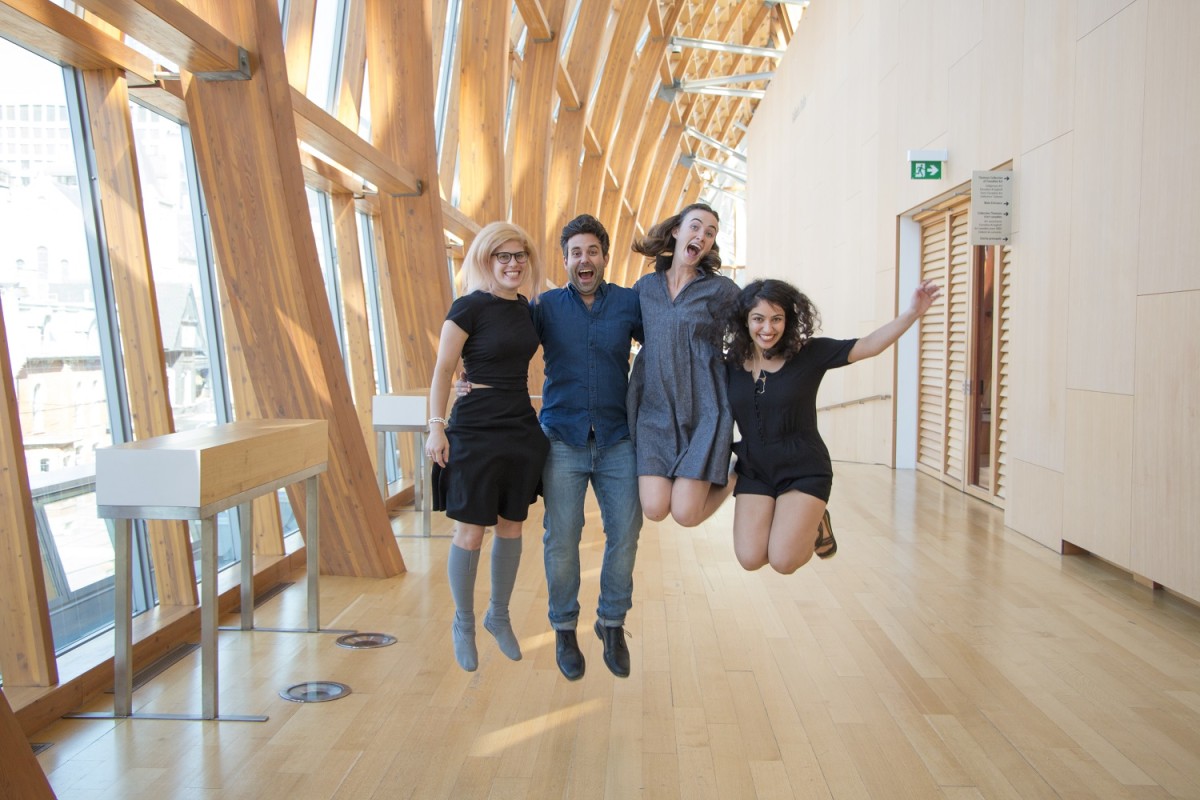Bringing European art to life

Michelle Tracey, James Smith, Alice Snaden, and Ghazal Azarbad. Photo by Daniel Malavasi.
Our European Galleries have undergone a major facelift with the Look: Forward reinstallation project, which began earlier this year. The project will continue into 2018 with the goal of displaying the AGO Collection in new spaces, through inspired perspectives, and presenting never-before-seen works by underrepresented artists and voices.
Recent visitors to the AGO may have already enjoyed the revamped European Galleries, but thanks to a partnership with Soulpepper Theatre, visitors can engage with the artworks in a whole new way. If you were at the AGO this past weekend, you may have run into a group of talented actors, singers and musicians who performed original pieces in response to the Collection. You can catch them again at the following times:
- Friday, December 15 at 6:30 and 7:30 pm
- Saturday, December 16 at 12:30 and 1:30pm
- Sunday, December 17 at 12:30 and 1:30pm
Featuring seasoned Soulpepper actor Raquel Duffy, alongside Soulpepper Academy members Ghazal Azarbad, Nicole Power, James Smith, Alice Snaden and Michelle Tracey, the performances take a look at pieces from the AGO’s European Collection from a woman’s point of view.
“As a group we took our own experiences as a point of departure, and since most of the performers are women, we asked questions about how women are represented in these works, our relationship to the works, and we put how we felt into a response through performance,” said Guillermo Verdecchia, Soulpepper Resident Artist and co-facilitator of the AGO-Soulpepper Residency. “Some of the performances are based on general observations, and we’re responding to the general atmosphere of the space, and then there are a couple of specific pieces that we’re engaging with directly.”
The pieces these artists are responding to include Peter Paul Rubens’s The Massacre of the Innocents (1611–1612), Jan Weenix’s Still Life with Dead Hare (1642–1719), Anthony van Dyck’s Daedalus and Icarus (1620) along with Auguste Rodin’s Adam (conceived 1881, cast before 1929) and Eve (1883).
“I think that fine art is its own language in a way, and sometimes we try to explain it with words that can reduce or flatten the experience. Maybe by singing with or moving to the art we can find another way to think about it, another way to experience it,” Verdecchia added.
Are you an AGOinsider yet? If not, sign up to have stories like these delivered straight to your inbox every week.

